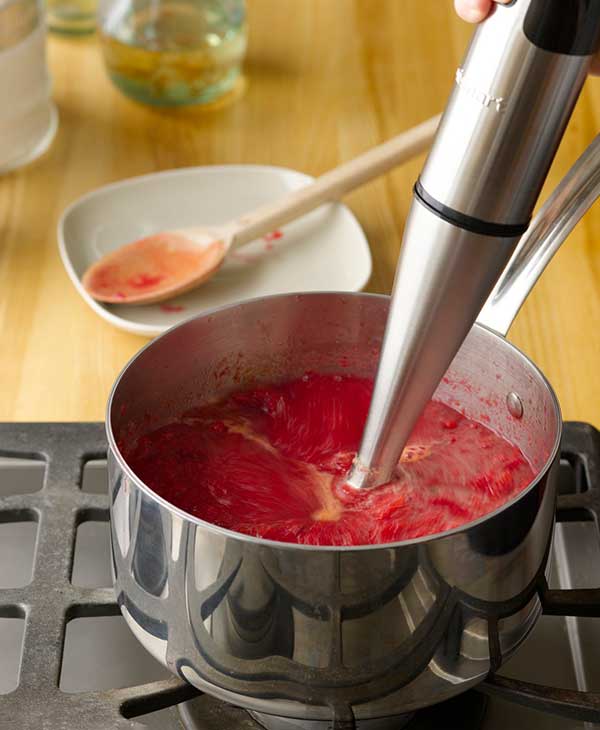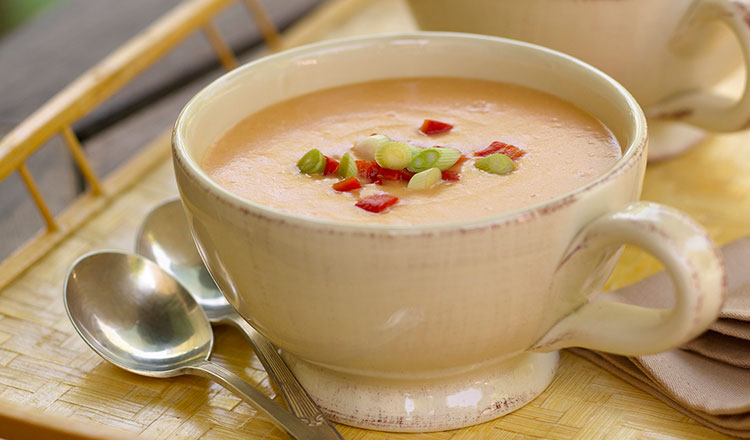Hearty, robust puréed soups are made from filling foods that are easy to keep on hand in cupboards all year-round: beans, dried peas, lentils, potatoes, and other root vegetables. Like all soups, you can build flavor into them every step of the way.
Cooking onions and garlic in a little oil or a bit of bacon fat infuses the soup with savory richness. The way you purée your soup can have almost as much influence on the way the soup tastes as the ingredients you choose. The instructions we offer here give you all the options from chunky to coarse to silky smooth.
- Sweat the aromatics and add liquid: Sweat the aromatic vegetables and, if appropriate, the main flavoring ingredient. Add the liquid, which may be prepared broth, stock, or even water, and bring to a full boil; establish a gentle simmer. Add the main flavoring ingredient, if it was not added with the aromatics, and continue to simmer.
- Simmer gently until ingredients will purée easily: Simmer until all the ingredients are soft enough to purée easily. Because most puréed soups are fairly starchy, they should be stirred frequently during cooking to prevent scorching. A gentle cooking speed and a heavy-gauge pot will also help to prevent scorching. If the soup does begin to scorch, it should be immediately transferred to a cool, clean pot and the flavor should be checked. If the soup does not taste scorched, the process may be continued.
- Add the spice sachet: Add the spice sachet or bouquet garni approximately 1 hour before the end of the cooking time. Check the flavor as the soup develops; remove and discard the sachet or bouquet garni when the proper flavor extraction is reached.
- Purée the soup: Purée the soup using one of the methods described below, garnish as desired, and serve. Soups that have become too thick during cooking, or if you have made them ahead, can be thinned with stock or water after they have returned to a boil. It is rare for puréed soups to be too thin, but if your soup is, simmer it over low heat to evaporate some moisture and concentrate the flavor.
Puréeing the Soup
You can purée soups by a variety of means: using a handheld blender directly in the soup pot, with a sieve or a food mill, or in a countertop blender food processor. Follow these guidelines to avoid scalds and burns.
- For all soups: The first step, regardless of what piece of equipment you intend to use, is to pull the pot off the heat and let the soup cool for at least 10 minutes.
 Using a handheld blender: Be sure that the soup pot is not too full. You should have at least 4 inches of space between the top of the soup and the top of the pot. If the soup fills the pot more than that, transfer some of the soup to another bowl or pot. Put the head of the blender under the surface of the soup before you turn it on. Then, run the blender until the soup is smooth. You can strain the soup through a fine sieve after you purée it this way to remove any strings or fibers from the vegetables, if necessary.
Using a handheld blender: Be sure that the soup pot is not too full. You should have at least 4 inches of space between the top of the soup and the top of the pot. If the soup fills the pot more than that, transfer some of the soup to another bowl or pot. Put the head of the blender under the surface of the soup before you turn it on. Then, run the blender until the soup is smooth. You can strain the soup through a fine sieve after you purée it this way to remove any strings or fibers from the vegetables, if necessary.


